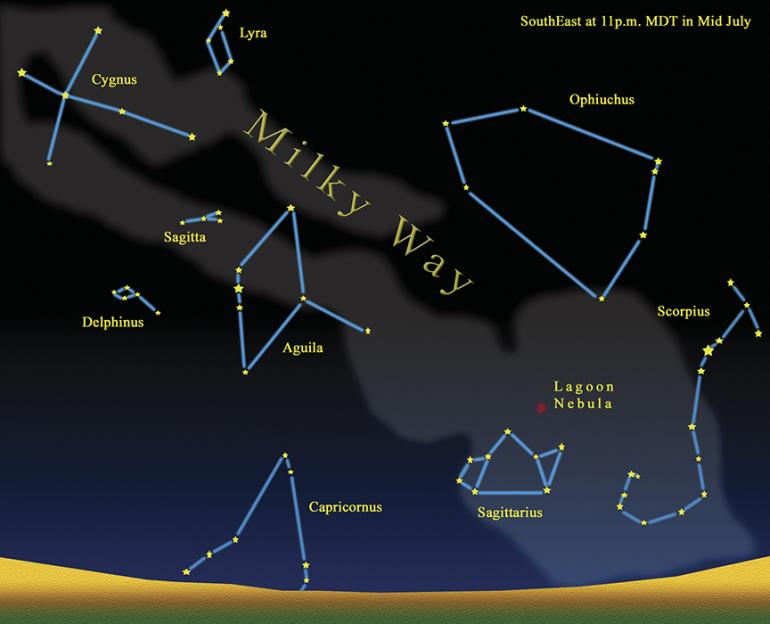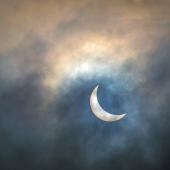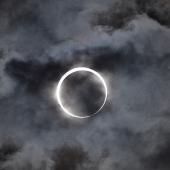The River of the Sky
This is the best season to see the hazy band of the Milky Way, stretching high across the east from north to south at nightfall in June. In July, it's higher as night begins, and by August, it stretches overhead from northeast to southwest as darkness descends, pivoting into the northwest with the turning of Earth. If it looks anemic from the glare of the city, get out into the dark, clear skies of the wilderness, and you'll see it transformed into a glorious, silver stream clotted with stars and dark dust clouds that fill the broad disk of our galaxy. The Milky Way is our inside, edge-on view of this galactic disk.
We can thank the Romans for naming the glittering river of the sky. The mythmakers tell us that the god Jupiter, having sired a bouncing baby boy named Hercules by the mortal woman Alcmene, wanted nothing less than full-fledged immortality for his progeny — which could be had at the breast of Jupiter's goddess wife, Juno. So the proud papa placed Hercules at Juno's bosom as she slept, and the hungry baby superhero knew just what to do. But as Hercules got down to business, Juno awoke and swatted him away, spilling the milk of immortality across the heavens. The gods having poor housecleaning service, it remains there today, called via lactea by the Romans — the "Milky Way."
It's easy to go fishing in the Milky Way; just grab your binoculars, lie on your back, and scan the rich starfields along its span. You'll reel in starclouds and clusters, and small filmy patches called nebulae which look whitish to the eye, but ruddy in color photographs as newborn stars forming from these clouds excite the surrounding hydrogen gas and make it glow. One of the easiest to find is the Lagoon Nebula, lying above the spout of the teapot shape of Sagittarius the archer in the south —almost exactly in the direction of the center of our galaxy where a giant black hole sputters, masked from view by stars and dust.
Another of the constellations caught in the heavenly stream is Cygnus, the swan, also known as the Northern Cross from its obvious shape as it swings nearly overhead with the Milky Way on these temperate nights. The bright star at the top of the cross (marking the tail of the swan) is Deneb, a blue-white supergiant star some 1,500 light years distant. The star at the base (marking the swan's head) is named Albireo; a telescope reveals it to be a lovely double star, with blue and gold components about 400 light years away.
The Greeks made Cygnus part of a little morality play by casting him as the originally human best buddy of Phaethon, the son of the god Helios. Like many teens, Phaethon had an itch to get the keys to the old man's wheels — in this case, the sun chariot that Helios drove across the sky each day — and to take it out for a spin. Early one morning, the sneaky Phaethon hitched up the horses unbeknownst to Helios, took the reins, and set out for the open road of the sky. But the rambunctious steeds sensed an inexperienced hand at the helm, and plunged out of control. As the brilliant sun chariot careened too close to the earth, fields and forests began to burn and the alarm was raised. A well-aimed thunderbolt by Zeus, king of the gods, quickly brought Phaethon's joyride to a fatal climax, and the hapless charioteer, struck dead, fell from the sky like a shooting star and splashed into the river Eridanus.
That left the grieving Cygnus to dive into the river to retrieve the remains of his best friend. The gods, touched by Cygnus' devotion — and noting how much he reminded them of a diving swan — transformed Cygnus into one of these crook-necked birds and placed him in the sky, wings and neck outstretched. Today, we find him languishing along the trail of sparks — the Milky Way — left behind by Phaethon on his ill-fated journey across the sky.
May your own journeys end better this summer, but remember to put down the rod and reel from time to time and dip a figurative toe into the great river of the sky. It runs through a landscape worth exploring, on those lazy nights while the trout doze and Cygnus soars above.
The Taylor Planetarium offers guided tours of the universe daily at the Museum of the Rockies in Bozeman.













